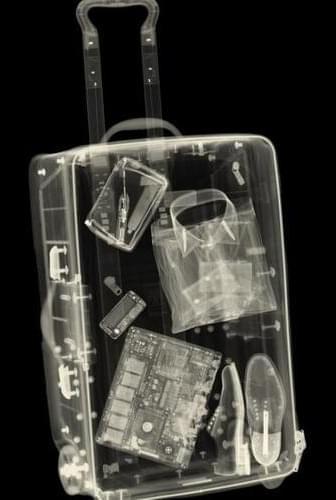Disney Research Studios’ newest neural network, FRAN, can shave hours off of VFX artists’ workloads to create convincingly re-aged actors.
Get the latest international news and world events from around the world.



Autism-linked gene found to shape nerve connections
A gene linked to autism spectrum disorders plays a critical role in early brain development and may shape the formation of both normal and atypical nerve connections in the brain, according to a new study by Weill Cornell Medicine investigators.
The study, published Nov. 28 in Neuron, employed a combination of sophisticated genetic experiments in mice and analysis of human brain imaging data to better understand why mutations in a gene called Gabrb3 are linked to a high risk of developing autism spectrum disorder (ASD) and a related condition called Angelman Syndrome. Both conditions involve abnormal behaviors and unusual responses to sensory stimuli, which appear to stem, at least in part, from the formation of atypical connections between neurons in the brain.
“Neuron al connections in the brain, and developmental synchronization of neuronal networks, are perturbed in individuals with autism spectrum disorders, and there are specific genes that are implicated in the pathogenesis of ASD,” said co-first author Dr. Rachel Babij, a former student in the Weill Cornell/Rockefeller/Sloan Kettering Tri-Institutional MD-Ph. D. program in the laboratory of Natalia De Marco García, an associate professor in the Feil Family Brain and Mind Research Institute at Weill Cornell Medicine.

World-leading hospital set to specialise in longevity
One of the world’s leading hospitals is preparing to offer longevity clinical services to patients. Sheba Medical Center in Tel Aviv, Israel, is poised to open a dedicated longevity centre in 2023, with the goal of democratising the extension of healthy lifespan for the masses.
Longevity. Technology: While research, development and investment in longevity are at an all-time high, the implementation of longevity clinical practice in mainstream healthcare is virtually non-existent. While private clinical practices are now making longevity services accessible to those who can afford it, the societal benefit of improving healthspan can only be realised if everyone can access it. To learn more, we caught up with Professor Tzipi Strauss, Director of Neonatology at Sheba Hospital, who is the driving force behind the new centre.
It may seem curious that a paediatrician is the instigator of an initiative focused on improving aging, but Strauss explains that the relevance of longevity begins at birth.


President Surangel S. Whipps, Jr. — Republic of Palau — Environment, Economy, Palauan People First
Environment, Blue Economy And Putting The Palauan People First — H.E. President Surangel Whipps Jr, Office of the President, Republic of Palau.
H. E. President Surangel S. Whipps, Jr. is the 10th President of the Republic of Palau (https://www.palaugov.pw/executive-branch/president/).
President Whipps was formerly a two-term Senator having served in the 8th and 9th Olbiil Era Kelulau (OEK, Palau National Congress) from 2009 through 2016. His Senate report card maintains his reputable record in policy making to promote and protect the best interests of Palauans, including: conducting more than 100 oversight hearings to promote transparency and accountability in delivery of government services, spearheading the first bill introduced in the 9th OEK that became law to increase the minimum wage since its enactment in 1997, and most recently, balancing Palau’s focus on developing and promoting human resources and fostering their economy, while striking a balance in the protection of the environment, putting the Palauan people first.
Prior to his career in politics, President Whipps had over 30 years of private sector experience managing one of the largest growing companies in Palau. As CEO and president of the Surangel and Sons Company, he led the expansion from a one floor store with 50 employees, to a diversified company employing over six-hundred people.
President Whipps grew up in a family business that started with his parents improvising to sustain their living by opening a restaurant, fishing and selling their catch, taking tourists out to the rock islands and diving, and selling goods out of their house.


Crypto exchange Coinbase says Apple has shut down the ability for users to send NFTs because it can’t collect the 30% in-app fee
Apple’s mobile store can typically charge up to 30% commission on in-app purchases, but gas fees don’t occur within the app. Gas fees, which are the charge a user pays to perform a function on a blockchain, keep its network running. Therefore, you can’t pay for gas fees using Apple’s software.
Apple did not immediately respond to Insider’s request for comment.
“For anyone who understands how NFTs and blockchains work, this is clearly not possible,” Coinbase said. “Apple’s proprietary In-App Purchase system does not support crypto, so we couldn’t comply even if we tried.”